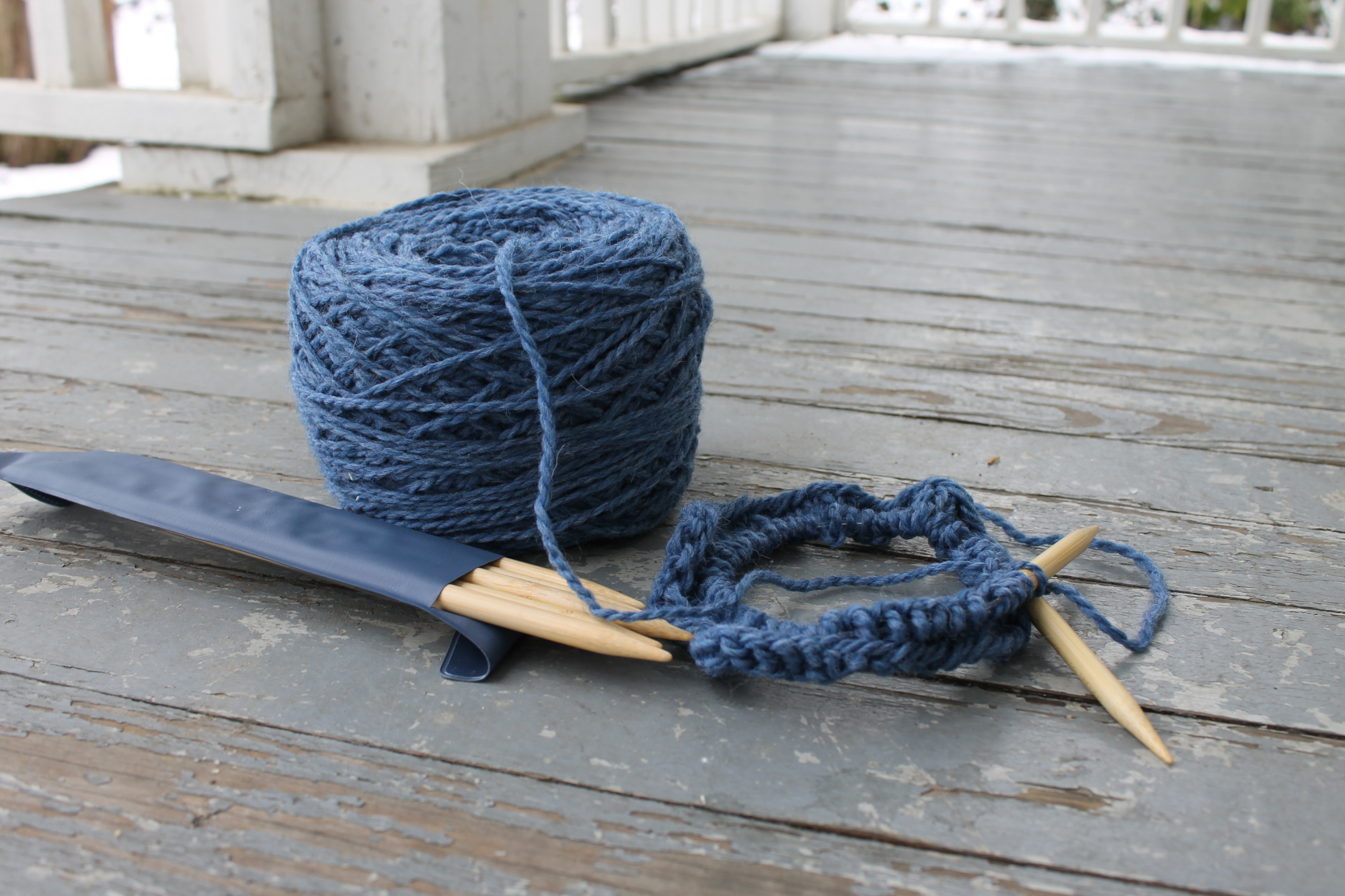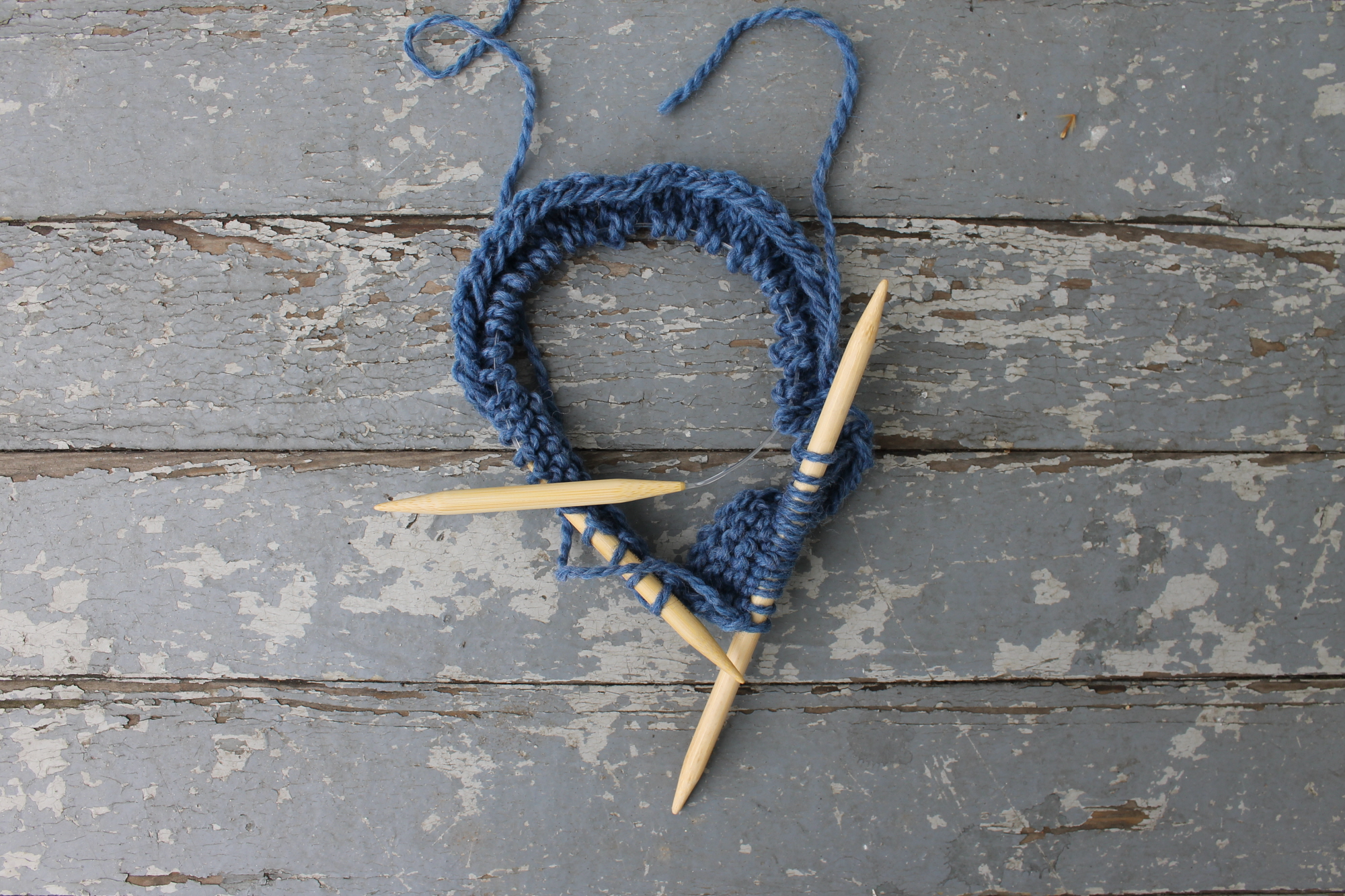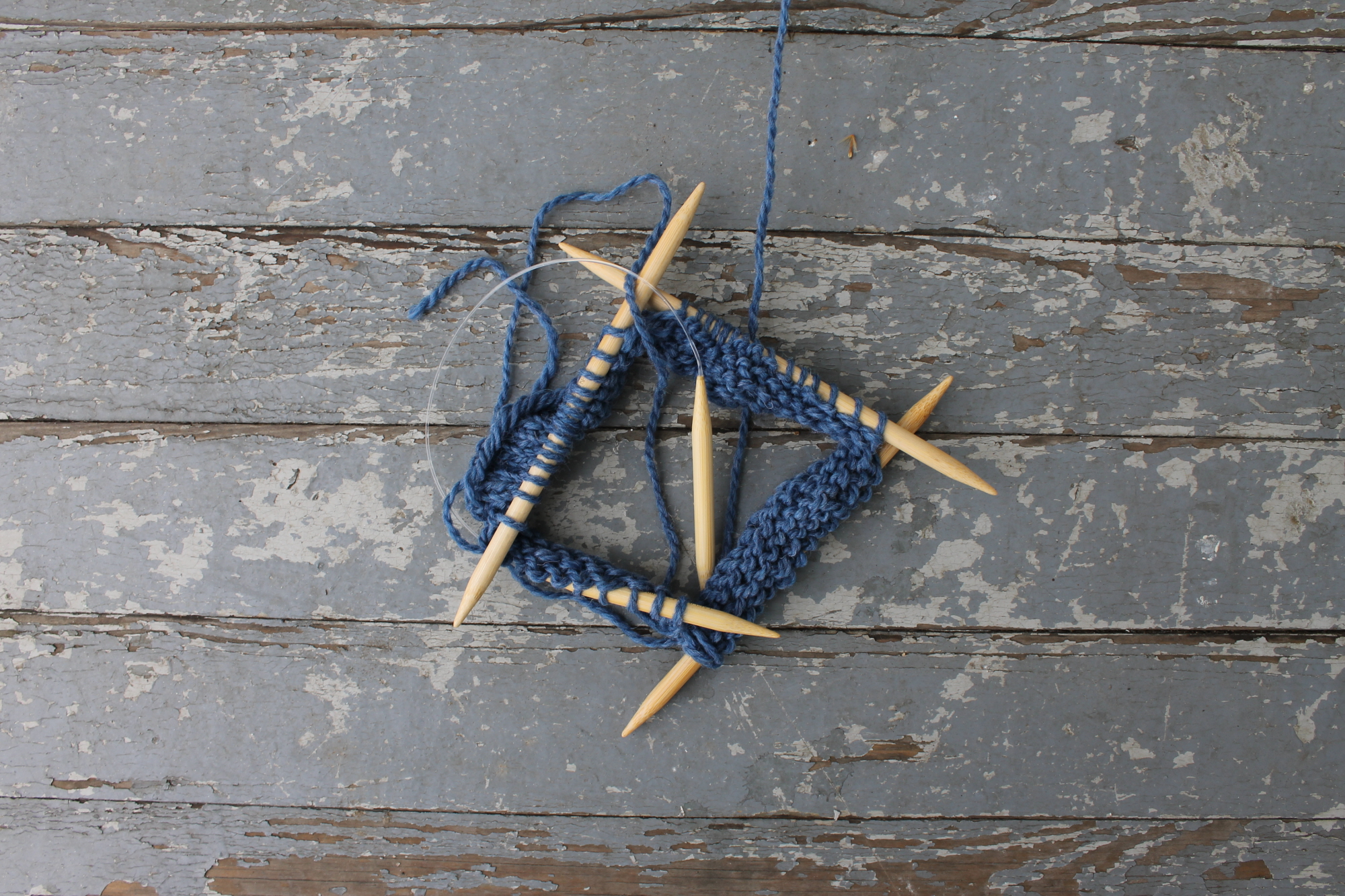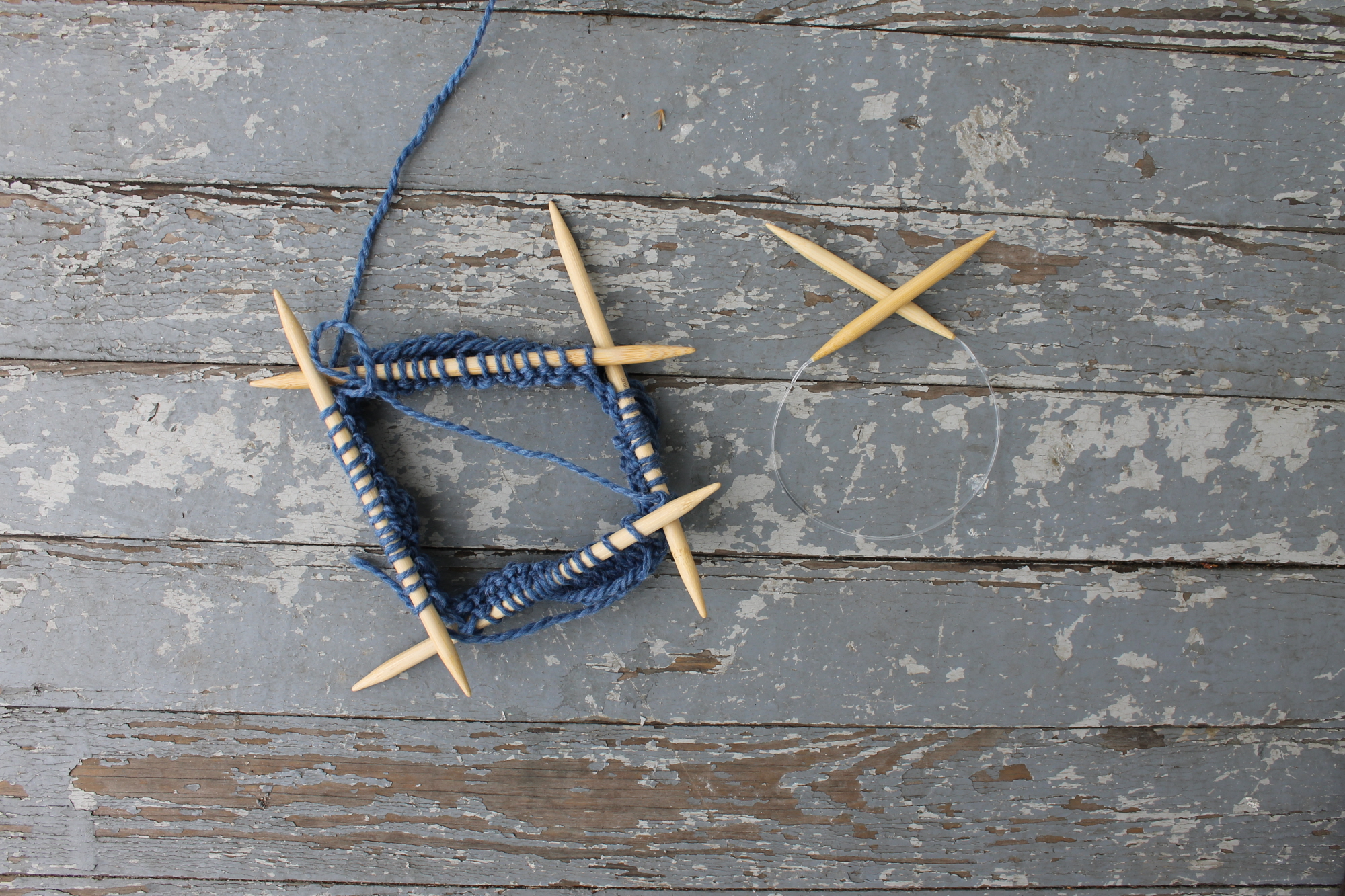Figuring out how to switch to double-pointed needles from flat or circular needles can be frustrating the first time you try it. You’re juggling two different types of needles while stitching and also crossing your fingers that the stitches won’t fall off as you make the switch. It’s a sticky situation.
But switching to double-pointed needles doesn’t have to make you break out in hives. There are two simple techniques you can use to learn how to switch to double-pointed needles without losing your mind — or your stitches.
Learn how to switch to double-pointed needles with these 2 techniques.

Do the math.
First you need to determine how many stitches you’ll transfer to each double-pointed needle. To do this, count the number of stitches on the circular needle, then divide that number by the number of double-pointed needles you’re using. (Don’t forget that one of the double-pointed needles will be used to knit, so if you have a set of 5, then calculate for 4 double-pointed needles.)
Number of stitches on your circular needle / Number of double-pointed needles
Let’s say you have 40 stitches on your circular needle and you’re planning to use three double-pointed needles:
40 stitches on circular needle / 3 double-pointed needles = 13.33333
Here’s one way you could divide the stitches:
Needle 1: 13 stitches
Needle 2: 14 stitches
Needle 3: 13 stitches
Now that you know how many stitches will go onto each double-pointed needle, you can start transferring the stitches.
Technique 1: Knitting off the circular
Pick up one double-pointed needle. At this point you’ll have the double-pointed needle in one hand and then circular needle in the other. Knit the first group of stitches right off that circular. In my example, I would knit 13 stitches onto the first double-pointed needle.

When you’ve knitted the desired amount of stitches onto that first needle, push all the stitches to the center of the needle to ensure they don’t slip off after you move on to the next group.
Pick up a second double-pointed needle and knit the next group of stitches off the circular.

Continue, knitting stitches off the circular needle and onto the other double-pointed needles.

When you’re finished, all the stitches will be held on the double-pointed needles and your circular needle will be free. Toss it to the side.

If you planned well, you’ll have an extra double-pointed needle. You can now use that needle to knit the stitches of the first double-pointed needle.
Technique 2: Slipping the stitches
If knitting the stitches right off the circular makes you queasy, there’s another option. Instead of knitting the stitches, simply slip them purlwise onto the double-pointed needles. It’s as simple as that!
When you need to make the switch
The most common pattern that requires switching from a circular to double-pointed needles is a hat that’s knit from the brim up to the crown. The hat gets smaller as you knit, but sometimes the double-pointed needles can’t accommodate all the stitches you cast on for the brim. Start out with a circular needle that can hold all those stitches, and then when you start decreasing you’ll notice that the stitches are stretching out around the needle. That’s when you know it’s time to change needles!
Make the switch from circular to double-pointed as soon as you start to notice that the circular is becoming too small. Waiting too long to switch to double-pointed needles can mess up your tension, which will affect your gauge.
There are plenty of other times that you might need to switch to double-pointed needles. Maybe you’re knitting sleeves or maybe you’re switching as you approach the neckline of a sweater. No matter what the case, just be sure you transfer those stitches early in the decreases.
If double-pointed needles aren’t your thing, you have another option: Magic Loop! The Magic Loop method uses a long circular needle to knit any size tube in the round, so you don’t have to change to double-pointed needles or even buy them. Check out a tutorial on how to knit Magic Loop.
Need some extra help switching over to double-pointed needles? Caddy Melville Ledbetter can show you how in her new class Learn to Knit: My First Hat. Caddy will help you with everything from choosing yarn to binding off.
How do you handle the switch from circular to double-pointed needles?

Share tips, start a discussion or ask one of our experts or other students a question.
No Responses to “How to Switch to Double-Pointed Needles from Circulars”